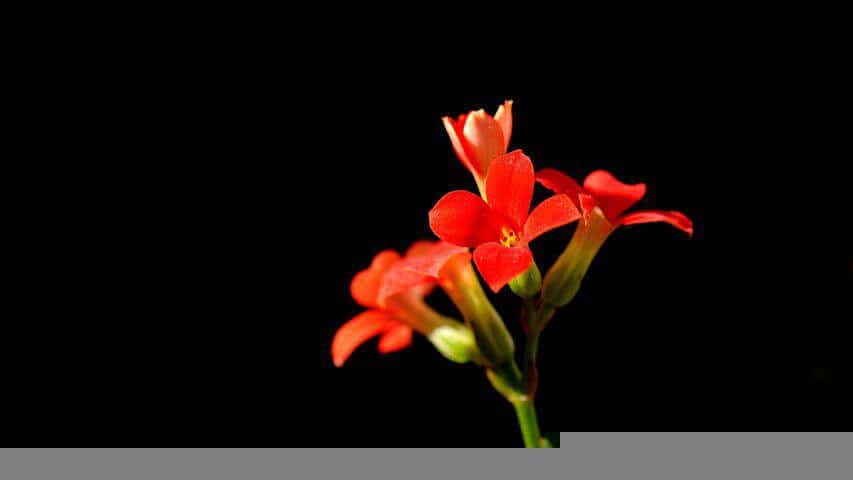Last Updated on May 23, 2023 by a Friendly Gardener
This popular succulent finds its natural habitat in Madagascar, and the plant genus includes over one hundred plant species. Even in the driest climates, these plants produce delicate flowers year-round with adequate sunlight, and their popularity stems both from their colorful blooms and ease of care. The Kalanchoe grows slowly and can take from two to five years to full maturity.

Widely distributed, the Kalanchoe is available at grocery stores, nurseries, garden centers, and florists. Bloom colors include red, pink, yellow, and white. Often showcased in attractive plant arrangements, it’s perfect for any decorative flower pot or basket. The Kalanchoe is a popular and delightful gift that will require very low maintenance on the part of the recipient.
About the Kalanchoe
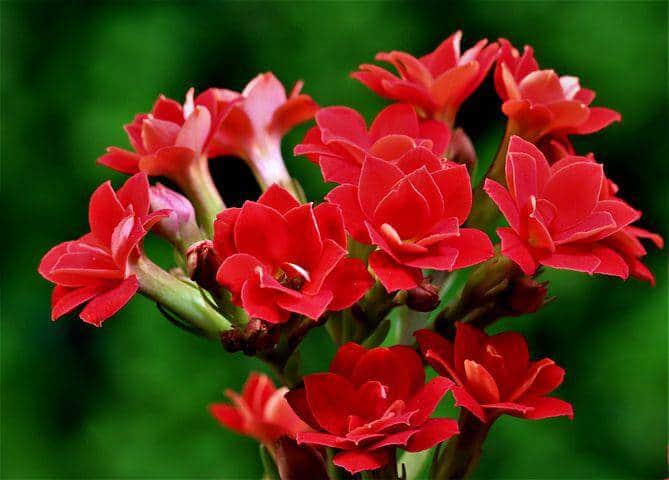
Botanically known as the Kalanchoe blossfeldiana, Kalanchoebelongs to the Crassulaceae family. It is known by a multitude of popular names including Christmas Kalanchoe, Chandelier Plant, Devil’s Backbone, Flaming Katy, Mother-in-law plant, Mother of Millions, Panda Plant, and Widow’s Thrill. Mature Kalanchoes can grow to one and a half feet tall and wide at full maturity.
Kalanchoe Plant Care
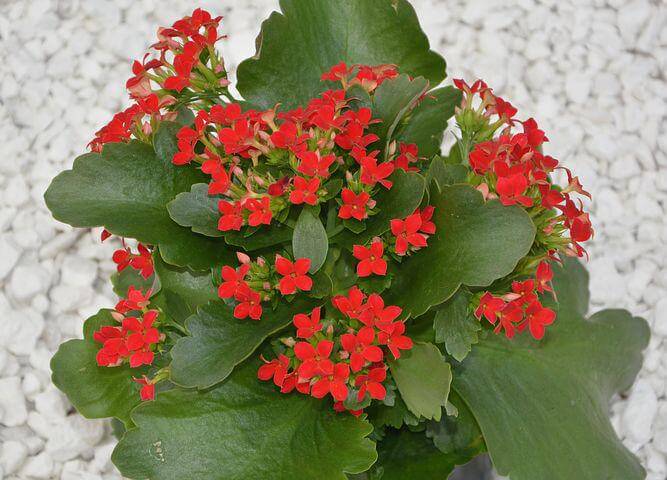
The Kalanchoe is a very low-maintenance houseplant that requires lots of sunlight, a well-draining soil bed, and not much else. While it will not produce blooms in winter, it still has a noteworthy capacity to tolerate varying temperatures. Spring will bring an explosion of color with multiple blooms that will last for several weeks. This plant can continue to bloom throughout the year in the proper environment. Proper sunlight, occasional pruning, and reduced watering will encourage your plant to bloom once spring has passed.
Soil
Ideally, the soil needs to be well-draining without excessive moisture retention. To blend a soil mix, use one part cactus mix, and one part quality potting mix. An alternative is two parts perlite and three parts peat moss.
Avoid placing your Kalanchoe in an excessively humid or moist environment, and check to ascertain the soil drains correctly. A Kalanchoe will benefit from cultivation in a terracotta or clay pot, to help wick away excessive moisture.
Light
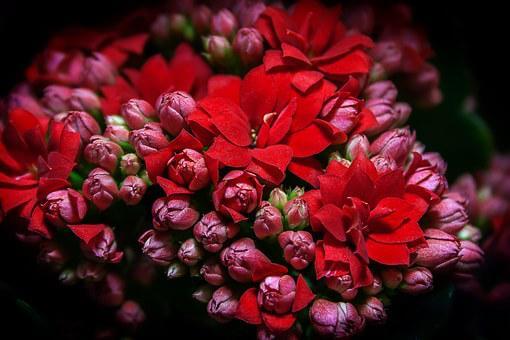
If there is a plant that loves sunlight, it is the Kalanchoe. It’s recommended that Kalanchoes not be placed on windowsills so as not to scorch fleshy foliage and inhibit the production of blooms. A nice sunny spot without direct UV rays is optimal.
Water and Humidity
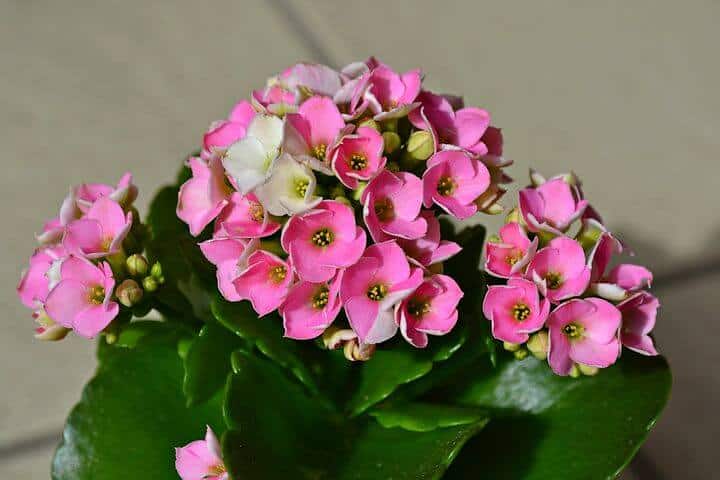
If you don’t keep houseplants because you forget to water or frequently travel, you won’t find a better plant than the Kalanchoe. This succulent thrives with little water. You can soak it every several weeks and then relax. Soaking should be further reduced during the winter.
Let the soil bed dry out completely between waterings to prevent root rot from taking hold. Then soak the plant. Poke your finger into the soil bed a few inches deep to evaluate watering needs. If it’s damp, wait several days and then check back. Being a succulent, the Kalanchoe has water stores in its foliage, so this plant has survival capabilities.
The Kalanchoe does not require specific humidity levels and does not require spraying or misting. As foliage is generously sized, it is, however, a good idea to spray or shower annually, to clean leaves and pores of dust.
Temperature
The best environmental temperature will measure between 55° and 80° Fahrenheit.
Feeding
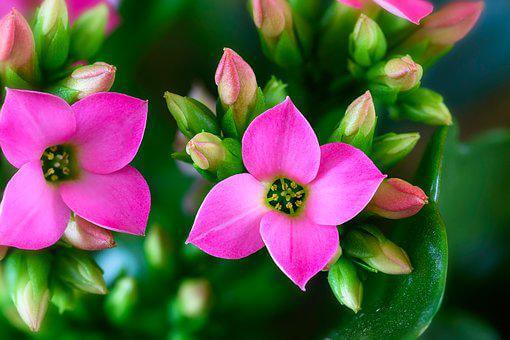
Occasional feeding for this flowering succulent will encourage healthy growth and bloom production. A well-balanced succulent fertilizer can be applied monthly during the spring and summer seasons. To increase Kalanchoe flower production, make sure your fertilizer includes potassium on its ingredient list. As an alternative, you can also use compost or worm castings in early spring to dress the soil surface. Over-fertilization will result in burnt leaf tips.
The Second Flowering
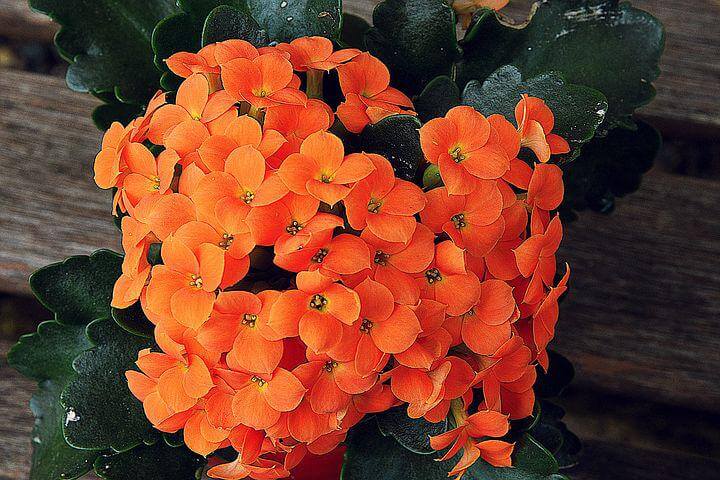
The Kalanchoe will, like most plants, flower in the spring. It distinguishes itself because it can bloom more often. The Kalanchoe must believe winter has come and gone to program a second bloom.
From October to March days shorten in length and naturally stimulate flower bud production. If you want to stimulate multiple flowerings, you need to substitute Mother Nature. Allow the Kalanchoe plant daily sunlight exposure in the mornings. In the afternoon, place your Kalanchoe in a very dimly lit location for the remainder of the day. Kalanchoes need from twelve to fourteen hours of daily darkness for one to two months to produce new blooms.
Kalanchoe Toxicity
Unfortunately, Kalanchoes are highly toxic to animals such as dogs and cats. Foliage and flowers contain bufadienolides. Symptoms of severe Kalanchoe poisoning may follow immediately after ingestion and include:
- Diarrhea
- Irregular or abnormal heart rhythm
- Vomiting
It is highly recommended that the Kalanchoe be kept where domestic pets cannot access it. Contact your veterinarian or local poison control center if you suspect your pet has ingested any part of this plant. Also, keep your Kalanchoe out of the reach of small children.
Pests, Diseases, and Problems
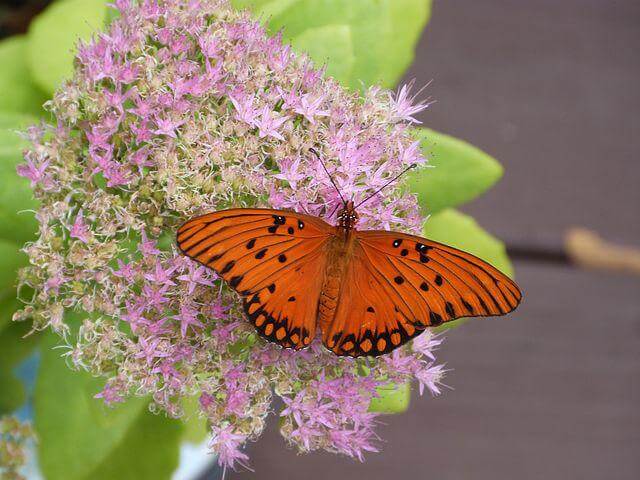
Kalanchoe, especially if placed outdoors during warmer months is susceptible to mealybugs and aphids. Mealybugs will appear as white cottony deposits that can be removed manually. After, spray your plant lightly with diluted organic Neem oil.
Foliage with brown patches has most likely received excessive direct sunlight exposure and the leaves are a bit burnt. Provide indirect sunlight by moving it to a brightly lighted location.
Kalanchoe that wilts can indicate that the environmental temperature is too cold. Keep your Kalanchoe away from drafts near windows and vents. Overwatering may also be a reason.
When stems appear mushy and brown stems your plant probably has root rot. This is due to overwatering. Root rot can be fatal for a succulent. Remove any parts of the plant affected by rot and let the soil dry out entirely before watering anew.
Pruning
For a plant with a compact appearance, pinch back any leggy new growth and trim away the stems with spent blossoms.
Repotting
Kalanchoes generally do not require repotting. Nonetheless, to ensure plant vitality, plan on repotting every couple of years. Select a new pot with a fresh new growing medium. Repotting should preferably be done at the beginning of spring. A bi-annual repotting will guarantee overall health.
Problems that require repotting include:
- The plant appears to be root bound with roots peeking out of drainage holes or the soil bed.
- The soil bed dries out immediately, demonstrating an inability to retain moisture.
- The plant has an unhealthy appearance. If you do not find problems connected to pest infestations, watering, or light, your Kalanchoe may need a new soil bed. Should the root ball appear damaged or in any way decayed, trim away damaged roots before you repot.
Kalanchoe Propagation

Kalanchoe propagation is pretty simple. Cut a stem section from a mature plant that is several inches long. Put it to dry out for a few days or until the cut end forms a callus. Plant the callused stem cutting in a growing medium. Do not water it. The stem should develop root growth in roughly a month.
All Things Considered
Vividly colorful starry-shaped blooms framed with the sculpted deep green foliage of this attractive succulent make it a delightful indoor addition to your décor all year round whether flowering or not. Blooms are long-lasting and the fleshy foliage of this succulent is pleasing to the eye. Kalanchoe is a low-maintenance plant making it perfect for beginners and people busy and always on the go.

